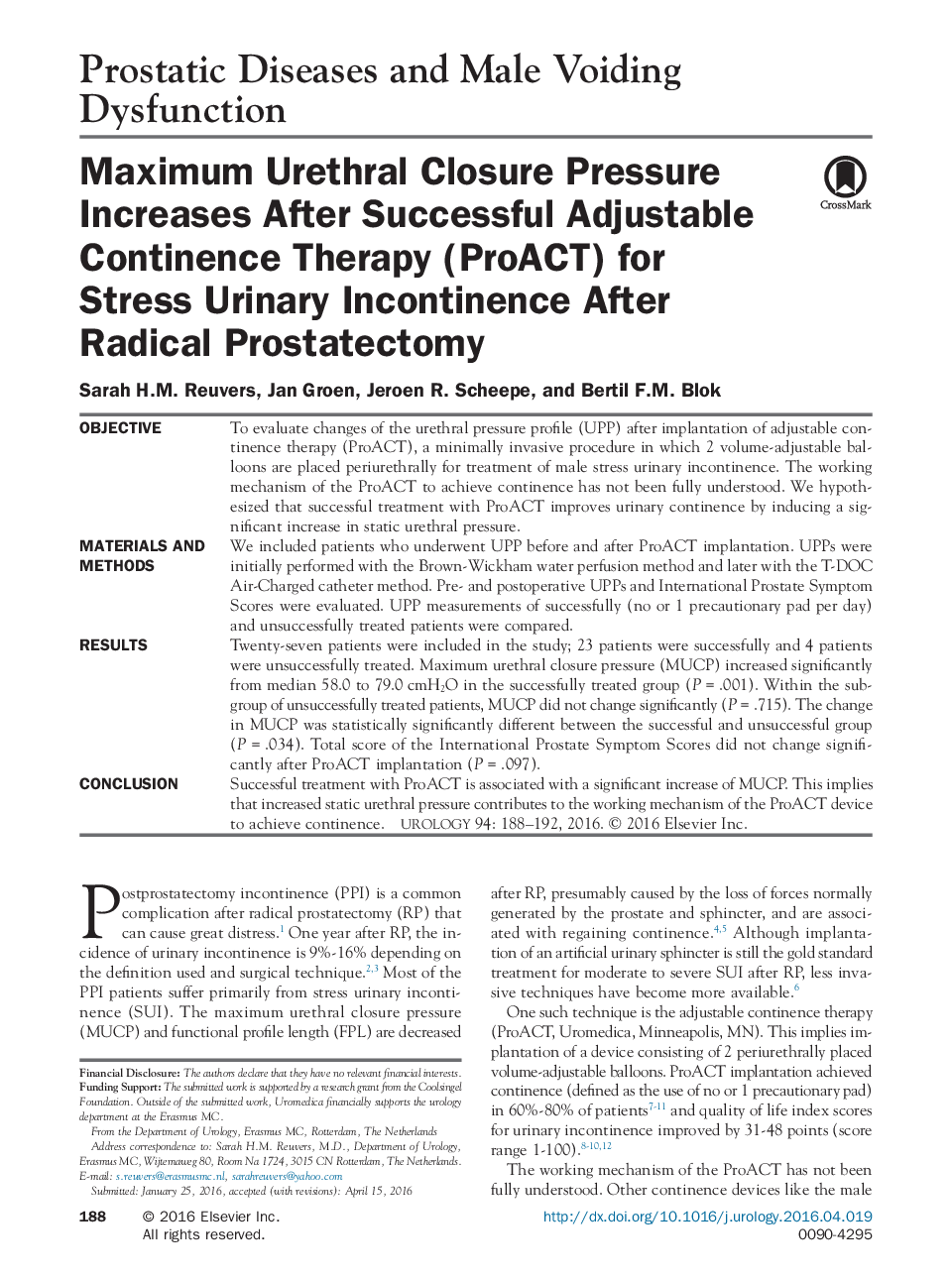| کد مقاله | کد نشریه | سال انتشار | مقاله انگلیسی | نسخه تمام متن |
|---|---|---|---|---|
| 3897828 | 1599258 | 2016 | 5 صفحه PDF | دانلود رایگان |
ObjectiveTo evaluate changes of the urethral pressure profile (UPP) after implantation of adjustable continence therapy (ProACT), a minimally invasive procedure in which 2 volume-adjustable balloons are placed periurethrally for treatment of male stress urinary incontinence. The working mechanism of the ProACT to achieve continence has not been fully understood. We hypothesized that successful treatment with ProACT improves urinary continence by inducing a significant increase in static urethral pressure.Materials and MethodsWe included patients who underwent UPP before and after ProACT implantation. UPPs were initially performed with the Brown-Wickham water perfusion method and later with the T-DOC Air-Charged catheter method. Pre- and postoperative UPPs and International Prostate Symptom Scores were evaluated. UPP measurements of successfully (no or 1 precautionary pad per day) and unsuccessfully treated patients were compared.ResultsTwenty-seven patients were included in the study; 23 patients were successfully and 4 patients were unsuccessfully treated. Maximum urethral closure pressure (MUCP) increased significantly from median 58.0 to 79.0 cmH2O in the successfully treated group (P = .001). Within the subgroup of unsuccessfully treated patients, MUCP did not change significantly (P = .715). The change in MUCP was statistically significantly different between the successful and unsuccessful group (P = .034). Total score of the International Prostate Symptom Scores did not change significantly after ProACT implantation (P = .097).ConclusionSuccessful treatment with ProACT is associated with a significant increase of MUCP. This implies that increased static urethral pressure contributes to the working mechanism of the ProACT device to achieve continence.
Journal: Urology - Volume 94, August 2016, Pages 188–192
